Can You Put a Solo Stove on a Wood Deck?
- April 17, 2023
- 0 comment
For many who love the outdoors, there’s nothing better than a warm, crackling fire on a cool evening. The Solo Stove, famous for burning cleanly and efficiently, seems like the ideal choice for these moments, especially if you want to use it on your wooden or composite deck. But is it really a good idea to place a fire source on wooden planks? This article explores if you can safely use your Solo Stove on your deck and what safety measures you should take.
Specifications of Solo Stove Yukon 2.0
- Material: Stainless Steel
- Product Dimensions: 29″D x 29″W x 18.5″H
- Style: Modern
- Brand: Solo Stove
- Finish Type: Polished
- Shape: Round
- Item Weight: 38 Pounds
- Fuel Type: Wood
Is It Safe to Place a Solo Stove on a Wooden Deck?
Yes, placing a Solo Stove on a wooden deck can be safe if you take the proper precautions. The key to safely enjoying your Solo Stove on any wooden structure is to minimize direct contact between the stove and the wood, which could lead to damage or a fire hazard. Here’s how to do it:
1. Fireproof Mat
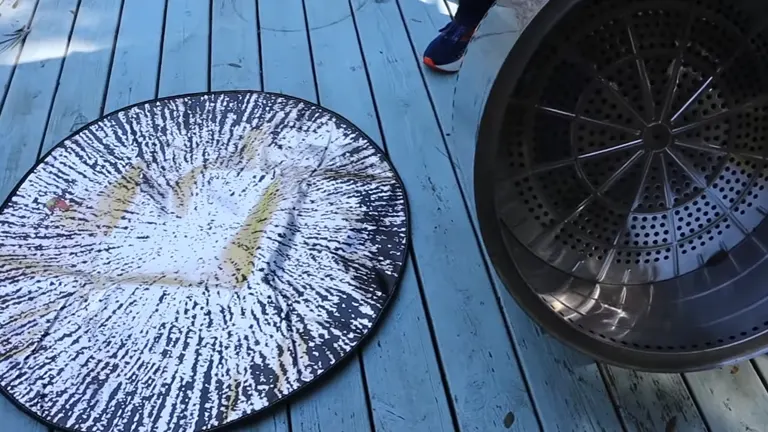
To enhance safety, place a fireproof mat beneath the stove. These mats are built to resist high temperatures and provide a protective barrier, guarding against heat damage and catching any stray sparks that might escape during use.
2. Use a Stand
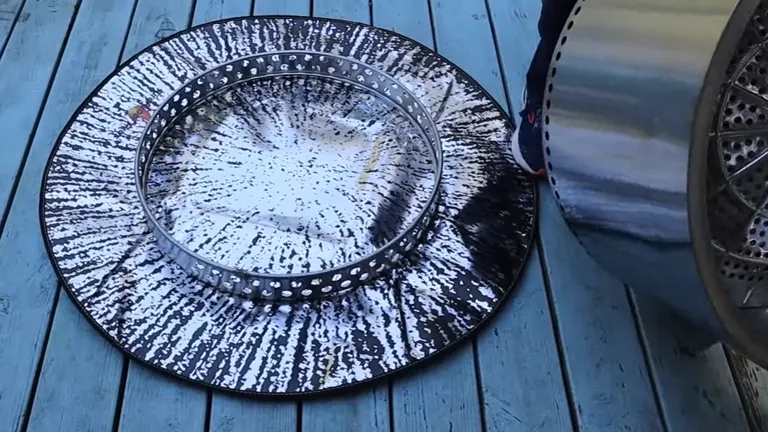
The Solo Stove stand is crucial for safely using the stove on a wooden deck. It elevates the stove, significantly reducing the heat transfer to the deck’s surface that could otherwise cause damage or pose a fire hazard.
3. Quality Fuel
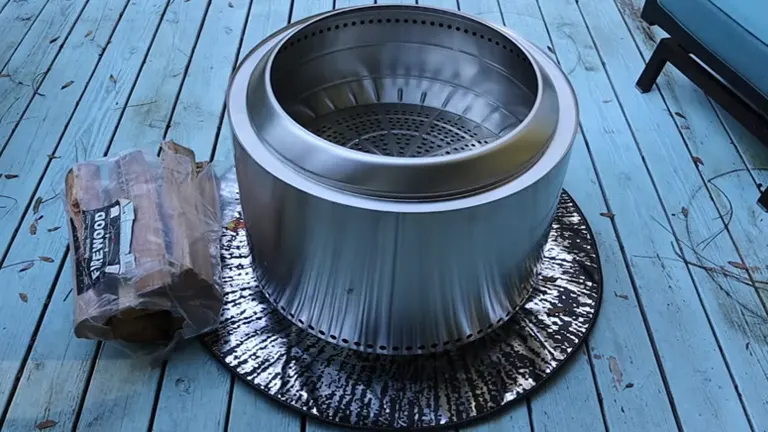
Choosing the right fuel is essential. Use high-quality hardwood, which burns cleaner and produces fewer sparks than softer, potentially damp woods. This reduces the risk of sparks igniting nearby materials.
Using Solo Stoves on Composite Decks
Composite decking, such as Trex, is favored for its durability and low maintenance, making it an ideal choice for modern outdoor spaces. These materials are engineered to withstand various elements, including heat and fire, to a certain extent. They typically come with fire resistance ratings ranging from Class A (the highest level of resistance) to Class C:
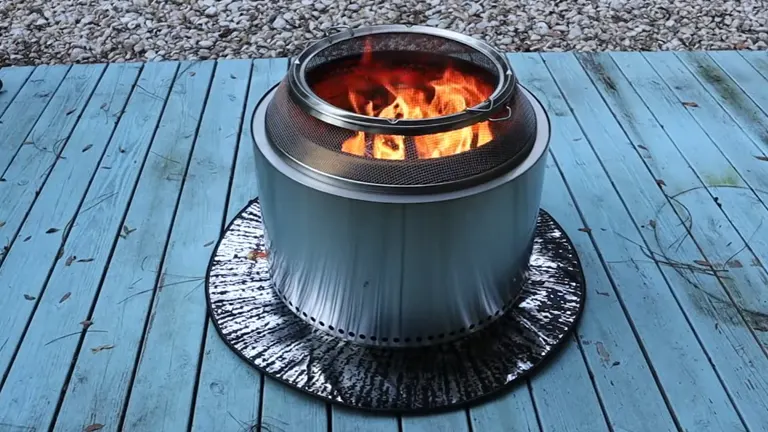
- Check Your Deck’s Rating: Before setting up your Solo Stove on a composite deck, it’s crucial to verify the specific fire resistance rating of your decking material. This information can often be found in the product documentation or directly from the manufacturer. Understanding this rating will help you assess the risk and take appropriate precautions.
- Always Use a Stand: The Solo Stove Stand is not merely an optional accessory; it’s a necessary safety measure, especially for composite decks. Placing the stove directly on the decking can lead to heat damage, even with materials that are designed to be fire-resistant. The stand elevates the stove, significantly reducing the amount of heat that reaches the deck’s surface.
How Hot Does a Solo Stove Get?
Solo Stoves are renowned for their efficiency and ability to generate significant heat, surpassing many other fire pits on the market. This enhanced heat production stems from their unique design, which optimizes airflow and combustion:
- Airflow Design: Each Solo Stove features strategically placed vents at the bottom that pull in air. This air movement not only fuels the fire but also promotes a continuous flow of cool air that helps moderate the temperature at the base of the stove, reducing the risk of overheating.
- Temperature Handling: The exact temperatures that a Solo Stove can reach will depend on several factors, including how much wood is used and the duration of the fire. While these stoves are designed with an insulated double wall that prevents the outer surface from becoming excessively hot, the base of the stove can still reach very high temperatures. It’s crucial to exercise caution, particularly when the stove is used in areas frequented by children and pets.
Additional Safety Measures and Tips
1. Use Concrete Pavers

Placing concrete pavers between the deck and the stove’s stand can provide an additional layer of insulation, further reducing the risk of heat damage to underlying surfaces. This method is particularly advisable when using the stove on more sensitive materials like wood or composite decking.
2. Spark Guards
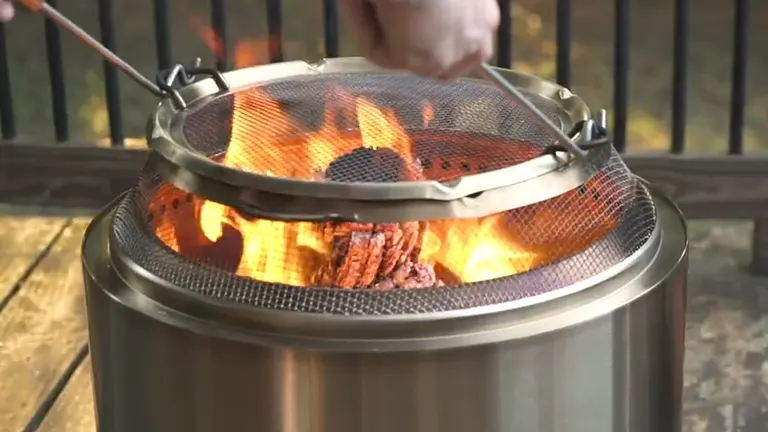
To minimize the risks associated with flying sparks, which can be a hazard in breezy conditions or when using particularly crackly types of wood, consider using mesh spark screens or traditional fire guards. These barriers can help contain sparks within the stove area, preventing them from escaping and causing unintended fires or burns.
Solo Stove Fire Pit Accessory Guide
Stand
Enables the use of your fire pit on heat-sensitive surfaces. Ideal for wood or composite decks, grass, and sand. For long burns, it’s advisable to place the Stand on stone or brick pavers for extra protection.

Shield
Provides protection from flying sparks and embers with its two-piece design, allowing easy addition of logs throughout your fire session.
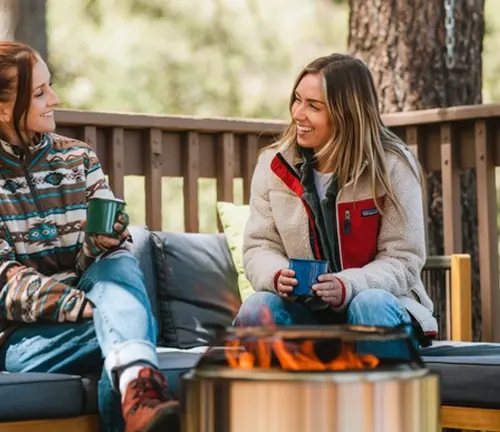
Surround
Offers a 360° protective barrier to ensure safety around the fire, making it perfect for families with children or pets.
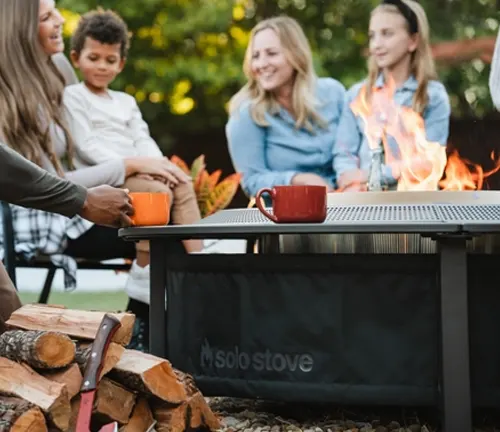
Surround Surface
A heavy-duty cover that not only protects your Solo Stove but also converts it into a stylish tabletop for drinks and snacks, enhancing usability throughout the year.
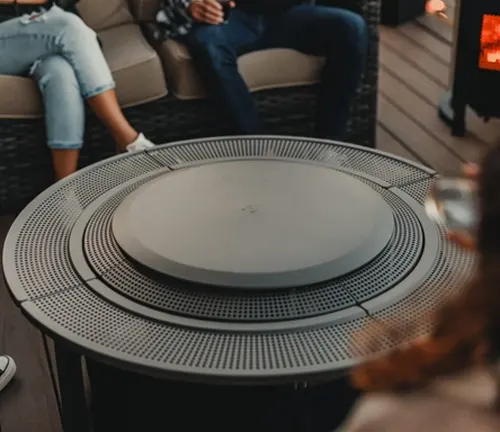
Pellet Adapter
Enhances your fire pit by adding dual-fuel capability, allowing the use of pellets for a convenient and efficient burn.
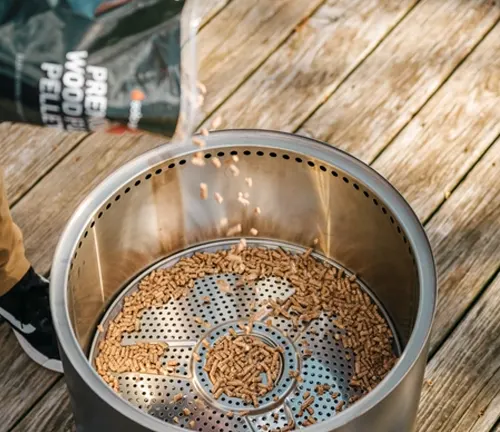
Handle
Facilitates easy transportation of your fire pit from one location to another, ensuring portability and convenience.

Shelter
A weather-resistant cover made from PVC-coated polyester that protects your fire pit from the elements and keeps it looking great.
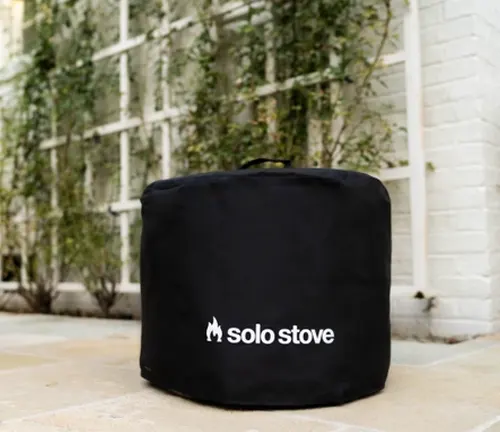
Heat Deflector
Increases the heat radius of your fire pit, redirecting warmth downwards and outwards to extend the comfort zone around your fire pit.
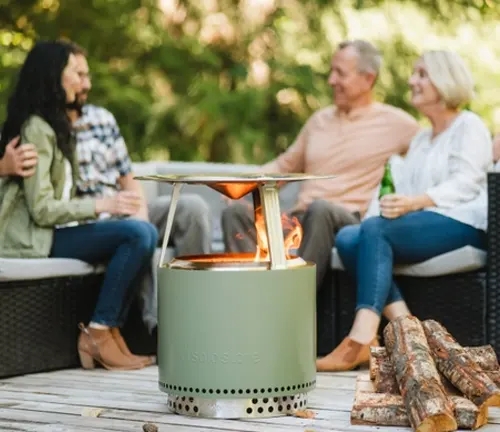
Lid
Doubles as a tabletop for gatherings and protects your fire pit from rain and debris when not in use.

Station
A robust storage solution for your fire pit, firewood, and accessories, complete with a protective PVC-coated polyester cover to shield against all-season debris.
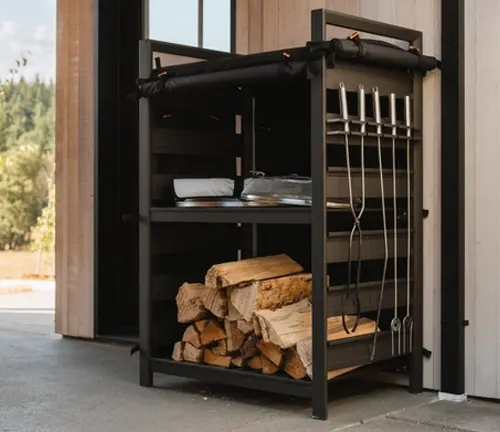
Sticks
High-quality, dual-pronged 304 stainless steel sticks that are dishwasher-safe and twist apart for easy storage, replacing traditional wire hangers.

Fire Pit Tools
Includes tools such as a Log Grabber with an extra-long handle for safe refueling and a Poker to adjust the fuel without getting too close to the heat.
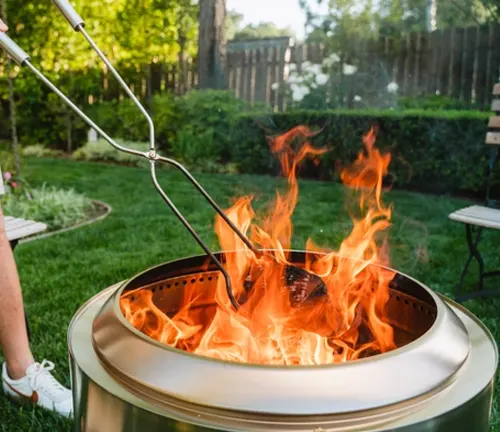
Fire Pit Cooking System
Transforms your fire pit into a cooking station with options like a Grill, Griddle, and Wok, perfect for enjoying flame-kissed meals outdoors.
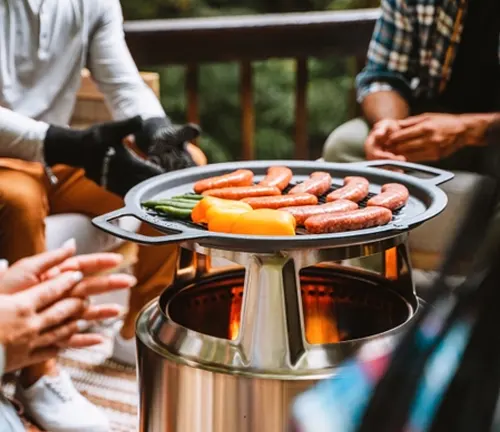
Environmental Considerations
Choosing a Solo Stove isn’t just a matter of practicality; it’s also a more environmentally friendly option. Solo Stoves produce less smoke and fewer sparks than traditional fire pits, reducing the amount of particulate matter released into the air. Moreover, if you’re concerned about the impact of heat on your decking material, using a stand and a heat-resistant mat can help mitigate any risks.
Conclusion
In conclusion, Can you put a Solo Wood Stove on a wood deck? Yes, you absolutely can safely use a Solo Stove on your wood or composite deck with the right precautions. Always use the stand provided, consider additional safety accessories like fireproof mats and spark guards, and choose the right fuel to reduce sparks. By following these guidelines, you can enjoy the warmth and ambiance of your Solo Stove without risking damage to your deck or safety.
FAQs
- Are Solo Stoves safe for wood decks?
Yes, Solo Stoves can be safe for wood decks, but you need to take precautions. Because they get very hot and sparks might fly, it’s important to use a fire-resistant mat along with the Solo Stove Stand to protect your deck surfaces from heat and potential scorching. - Can you put a stove on any type of wood deck?
When using a stove on a wood deck, avoid softer woods like pine or fir, which are less heat-resistant and more likely to warp or split when exposed to heat. Hardwoods are a safer choice due to their durability and better heat resistance. - Can I use a Solo Stove on a covered patio?
Using a Solo Stove under a covered patio is not advisable. Ensure there is at least six feet of clearance from any structures or trees around the fire pit, and a vertical clearance of 15-20 feet is necessary, making covered areas unsuitable. - Does Solo Stove require special wood?
Solo Stove performs best with kiln-dried hardwood. Hardwoods, being denser, burn longer and hotter, making them ideal for an efficient and sustained fire. - Do you need a stand for Solo Stove on a deck?
Yes, using the Stand is necessary when placing your Solo Stove on sensitive surfaces like wood, Trex decks, or grass. The Stand helps to elevate the stove and prevent heat damage. For extra safety, especially during extended use, placing concrete pavers under your Stand is recommended. - Why is it not advisable to use a wood stove?
Wood stoves produce particle pollution that can penetrate deep into the lungs and other organs, posing serious health risks such as coughing, asthma attacks, heart issues, and even premature death. They are particularly hazardous due to their emission of tiny particles that can affect the heart and brain. - How do you fireproof a wood deck?
To fireproof a timber deck, use flame-retardant sprays and consider adding metal sheathing around base timbers for enhanced protection. Consult a home improvement professional for the best fireproofing recommendations for your deck. - Is Solo Stove worth the investment?
Although Solo Stoves come with a significant price tag, they are considered worth the investment for those who want a nearly smoke-free and efficient backyard fire experience. Accessories such as roasting sticks and fire pit tools can enhance the enjoyment of your Solo Stove. - What happens if Solo Stove gets wet?
Solo Stoves are made from high-grade stainless steel, but they can still rust if exposed to moisture. To prevent rust, store your stove in a dry area or cover it when not in use. - What should I do if sparks from the Solo Stove land on my deck?
While using a fire-resistant mat and a stand significantly reduces the risk of sparks causing damage, it’s always good to be prepared for the unexpected. Keep a bucket of water or a fire extinguisher nearby when using the Solo Stove on your deck. This way, you can quickly extinguish any sparks or small flames that might escape. Additionally, regularly cleaning and maintaining the area around the stove will help minimize the risk of fire.
We hope this guide helps you enjoy your Solo Stove safely on your deck, making those cool evenings a delight without worries. Got more tips or experiences with Solo Stoves? Feel free to share them in the comments below. Your insights could help fellow enthusiasts make the most of their outdoor setups safely and efficiently!

David Murray
Forestry AuthorI'm David Murry, a forestry equipment specialist with a focus on chainsaw operation. With over 13 years of experience, I've honed my skills in operating and maintaining a wide range of machinery, from chainsaws to log splitters. My passion for the outdoors and commitment to sustainable forestry drive my work, which emphasizes safety, efficiency, and staying updated with industry advancements. Additionally, I'm dedicated to sharing my expertise and promoting environmental awareness within the forestry community.

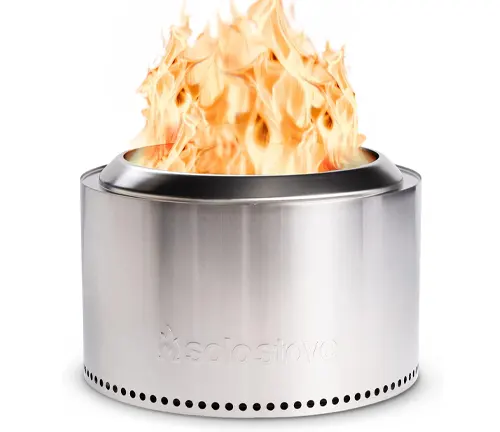
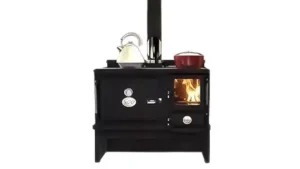

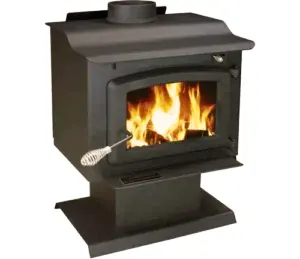
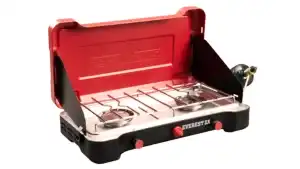


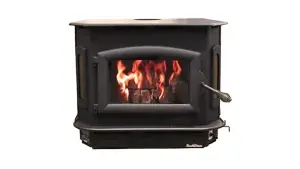

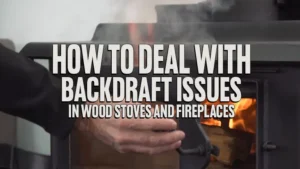
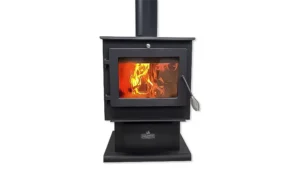


Leave your comment